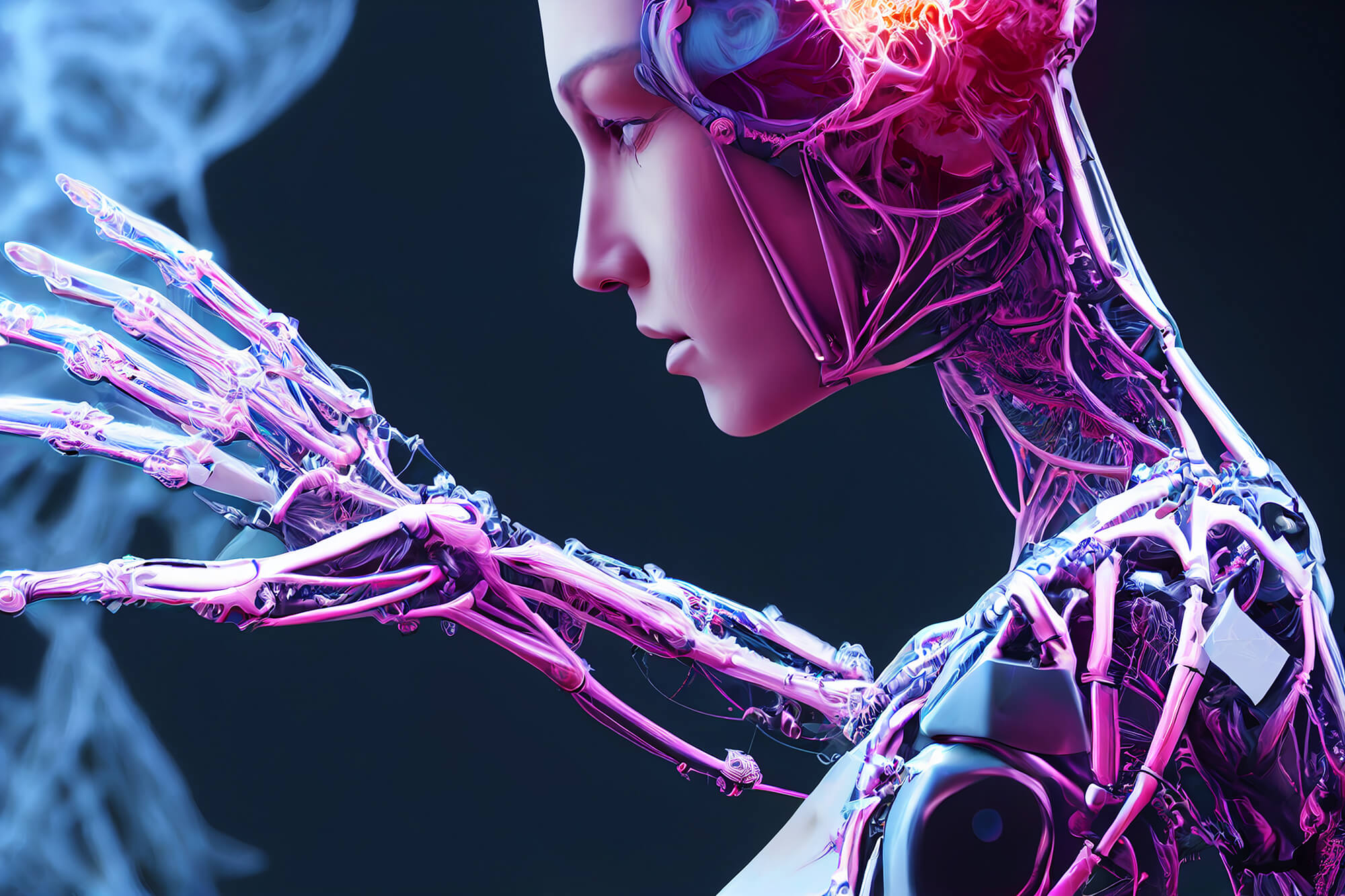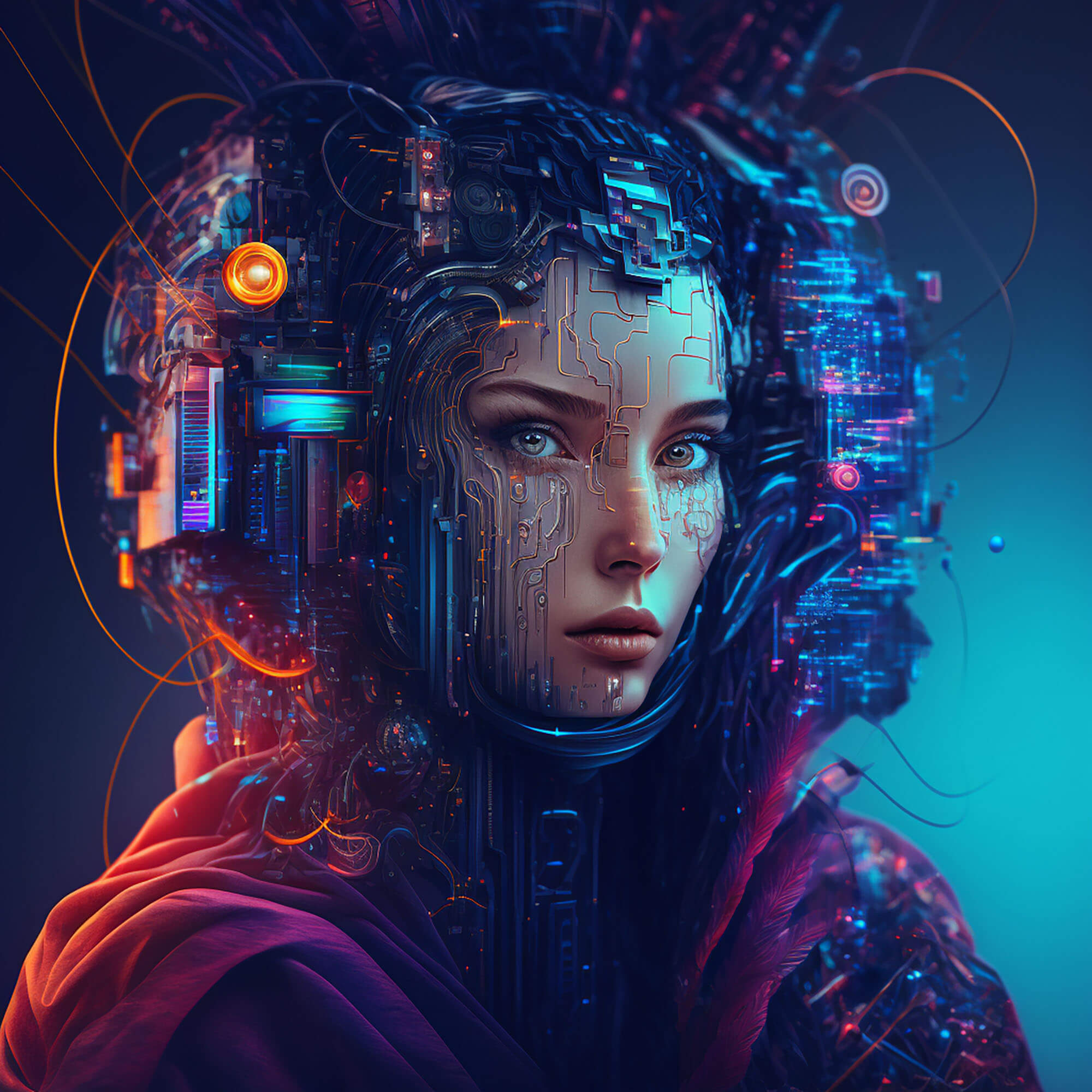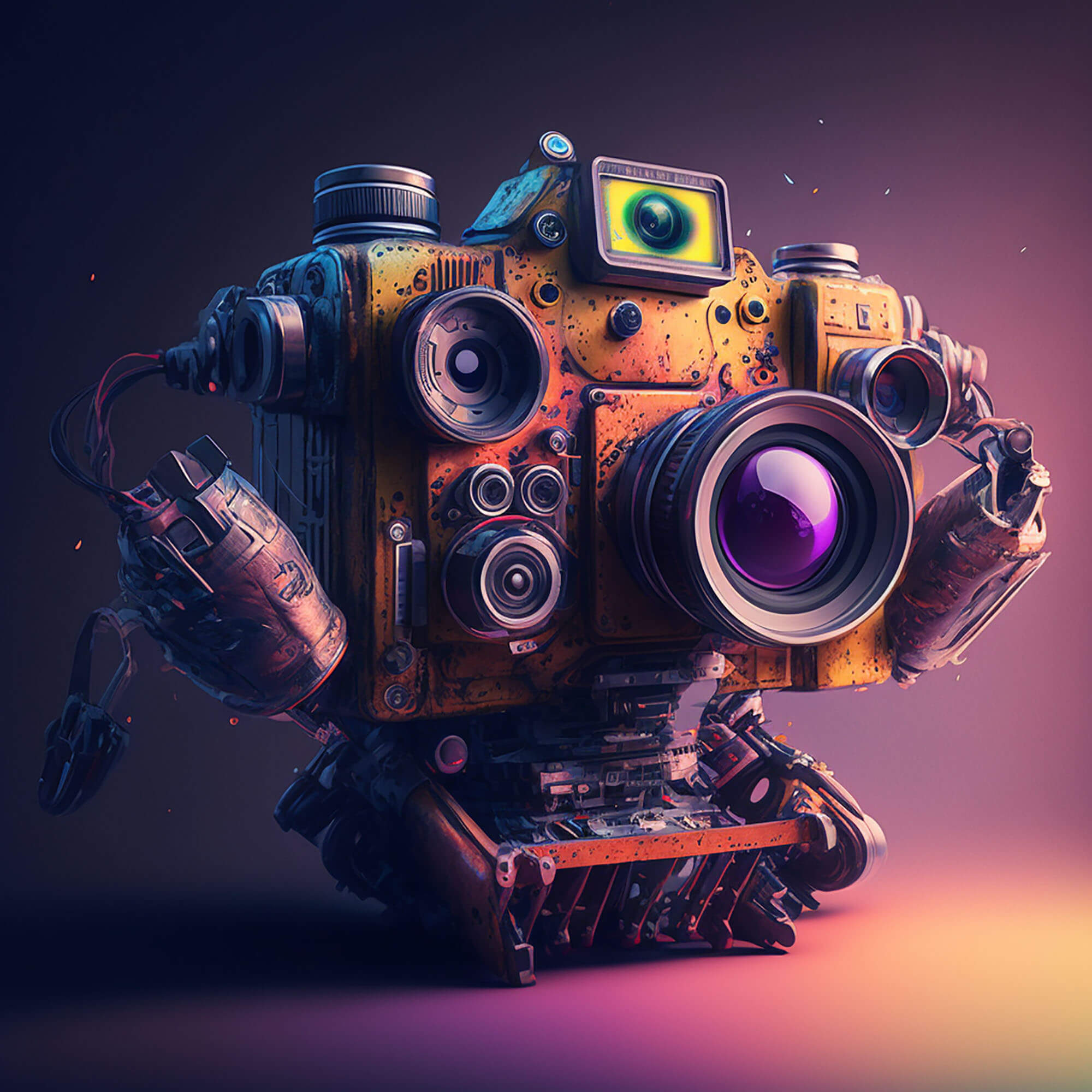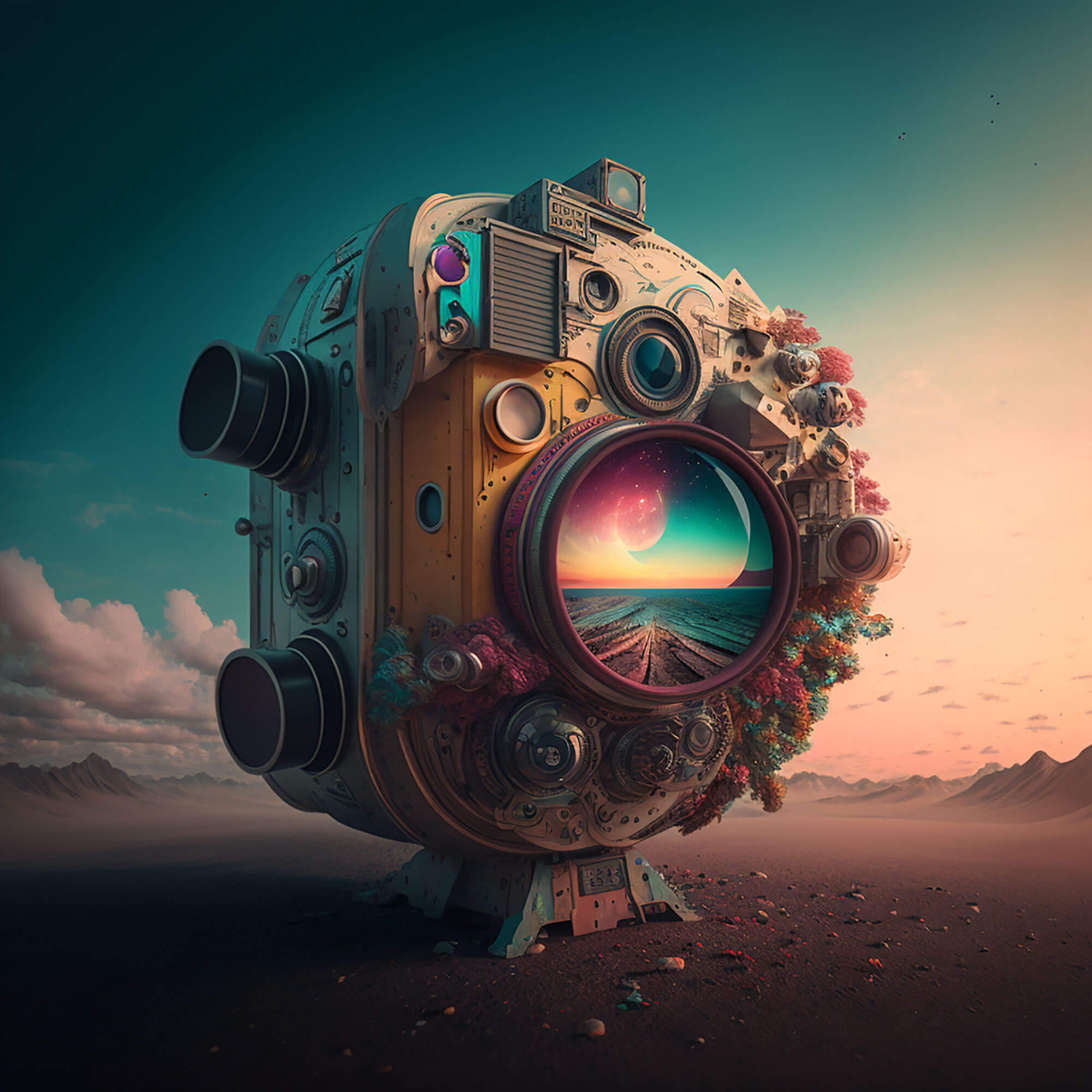Exploring the Intersection of Photography and AI: How Technology is Changing the Art of Picture Taking
We’re going to explore the exciting world of photography and AI, and how these two fields are intersecting in new and innovative ways. With the rapid advancement of technology, we’re seeing more and more ways that AI is being integrated into photography, from image processing and editing to camera features, image recognition, virtual reality and augmented reality, drones, print photography, e-commerce, education, surveillance and security.
AI is revolutionizing the way we capture and process images, making it easier and more efficient for photographers to create stunning and visually compelling images. It’s also opening up new possibilities for photographers to capture images and perspectives that were previously difficult or impossible to achieve.
In this series of videos, we’ll dive into the different ways that AI is being used in photography, and explore how it’s changing the way we think about and create images. We’ll also share some real-world examples of how AI is being used in photography today, and discuss the potential implications of these technologies for photographers and the photography industry as a whole.
So, whether you’re a professional photographer, an amateur, or just someone who loves taking pictures, this series is for you. So sit back, relax, and let’s explore the world of photography and AI together.
Segment 1: AI in Image Processing and Editing
One of the most exciting ways that AI is being used in photography today is in image processing and editing. With the help of advanced algorithms, the software can now analyze an image and make precise adjustments to things like exposure, colour, and contrast. This allows for faster and more accurate editing, and the ability to make adjustments to large numbers of images at once, saving photographers valuable time and effort.
But the capabilities of AI in image editing go far beyond just basic adjustments. With the help of advanced neural networks, AI can now intelligently remove unwanted objects from an image, such as photobombers, tourists, or even blemishes on the skin. It can also be used to add elements that weren’t there originally, such as changing the background, adding or removing people, or even creating entirely new and unique images.
The use of AI in image processing and editing also allows for more creative freedom for photographers, as they can experiment with different settings and techniques without the fear of damaging the original image. It also helps them to achieve a more professional look to their images, which can be used for commercial or personal use.
One example of this is the use of AI in portrait photography, which can automatically retouch skin, and remove wrinkles, blemishes, and other imperfections, allowing photographers to focus on capturing the perfect shot.
These are just a few examples of the ways that AI is revolutionizing image processing and editing in photography. As technology continues to advance, we can expect to see even more advanced capabilities and possibilities for AI in this area.
Segment 2: AI in Camera Features
Another way that AI is being used in photography today is in camera features. With the advancements in AI technology, many newer cameras now have features like facial recognition and object tracking, which use AI to identify and focus on specific subjects in an image. This can be especially useful for capturing candid shots of people or animals, or for tracking fast-moving objects like sports or wildlife.
But AI in camera features doesn’t stop there, it also helps to improve the quality of an image. AI-assisted image stabilization and noise reduction can help to make it easier to take clear photos in challenging conditions such as low light, fast-moving objects or when the camera is not held steady. This opens the door to new possibilities for photographers to capture moments that were previously difficult or impossible to capture.
Additionally, AI-powered cameras can also automatically adjust settings to capture the best image possible, based on the lighting and other conditions of the scene. This can save photographers time and effort by eliminating the need to manually adjust settings.
One example of this is the use of AI in smartphone cameras, which can automatically adjust the camera settings based on the scene, such as adjusting the exposure for low-light shots, or adjusting the shutter speed for fast-moving objects, making it easy for anyone to take great photos.
These are just a few examples of the ways that AI is revolutionizing camera features in photography. As technology continues to advance, we can expect to see even more advanced capabilities and possibilities for AI in this area.
Segment 3: AI in Image Recognition
Another area where AI is making a big impact in photography is image recognition. With the help of advanced algorithms, AI can now automatically tag and organize images, making it easier to find and access specific images later on. This can save photographers a significant amount of time and effort, especially for those who take a large number of photos on a regular basis.
But AI in image recognition doesn’t stop there, it can also be used to identify specific objects or landmarks in an image, which can be useful for things like mapping, search and rescue, and surveying. This allows for a more accurate and efficient way of identifying and locating objects, which can be especially useful for professional photographers and researchers.
Additionally, AI can also analyze the image and extract information from it, such as the image’s location, the type of object or landmark, and even the weather condition at the time the image was taken. This can provide valuable data for photographers, researchers, and even businesses.
One example of this is the use of AI in wildlife photography, which can automatically identify and tag specific species in an image, making it easier for photographers and researchers to track and study wildlife populations.
These are just a few examples of the ways that AI is revolutionizing image recognition in photography. As technology continues to advance, we can expect to see even more advanced capabilities and possibilities for AI in this area.
Segment 4: AI in Automated Image Curation
Another area where AI is making a big impact in photography is in automated image curation. With the help of advanced algorithms, AI can now automatically select the best images from a large number of photos taken, based on different criteria such as composition, focus, exposure, and other image attributes. This can save photographers a significant amount of time and effort, especially for those who take a large number of photos on a regular basis.
But the capabilities of AI in image curation go far beyond just selecting the best images. AI algorithms can also suggest edits, cropping, or even apply filters to enhance the final image. This can help photographers to achieve a more professional look to their images, which can be used for commercial or personal use.
Additionally, AI can also identify patterns in the images and suggest themes or styles that the photographer can use to create a cohesive and consistent portfolio. This can be especially useful for professional photographers who need to present their work to clients or publishers.
One example of this is the use of AI in stock photography, where AI algorithms can automatically select and curate the best images for commercial use, and even suggest edits or cropping to make the images more appealing to clients.
These are just a few examples of the ways that AI is revolutionizing automated image curation in photography. As technology continues to advance, we can expect to see even more advanced capabilities and possibilities for AI in this area.
Segment 5: AI in Virtual Reality and Augmented Reality
Another area where AI is making a big impact in photography is in virtual reality and augmented reality. With the help of advanced algorithms, AI can now create realistic 3D models of objects and scenes, which can then be used in virtual reality and augmented reality applications. This allows for a more immersive and interactive experience for the audience, and opens up new possibilities for photographers to showcase their work in new and exciting ways.
One example of this is the use of AI-generated 3D models in creating virtual tours of cities, museums, or even historical sites. This allows the audience to explore and discover these places in a new and interactive way, and it also allows photographers to capture and present their work in a new way.
AI can also be used to create realistic animations, allowing photographers to create new and dynamic content. This opens up new possibilities for photographers, who can now create immersive experiences for their audiences, such as creating animations of wildlife, sports, or other fast-moving objects.
Additionally, AI can also be used to create realistic simulations of natural phenomena, such as sunsets, sunrises, or even weather conditions, which can be especially useful for landscape photographers or videographers. For example, a virtual reality experience of a sunset in the desert, where the audience can see the sun setting and the sky changing colours, with the help of AI-generated simulations.
These are just a few examples of the ways that AI is revolutionizing virtual reality and augmented reality in photography. As technology continues to advance, we can expect to see even more advanced capabilities and possibilities for AI in this area.
Segment 6: AI in Drones and Aerial Photography
Another area where AI is making a big impact in photography is in drones and aerial photography. With the help of advanced algorithms, AI can now control drones, allowing them to fly autonomously, avoiding obstacles and capturing images. This can open up new possibilities for photographers to capture images and perspectives that were previously difficult or impossible to achieve.
AI-powered drones can also be programmed to fly specific flight paths, such as following a specific object or person, or even fly around and take images from multiple angles. This can be especially useful for capturing images of large events, such as sports, parades, or even weddings.
AI can also be used to analyze the images captured by the drones, and suggest the best images or even make adjustments to them, such as adjusting the exposure or colour balance. This can save photographers a significant amount of time and effort, especially for those who take a large number of photos on a regular basis.
For example, a real estate photographer can use an AI-powered drone to capture aerial shots of a property, the AI can then analyze the images and suggest the best angles, lighting and colour balance, making the post-processing work much easier. These are just a few examples of the ways that AI is revolutionizing drones and aerial photography. As technology continues to advance, we can expect to see even more advanced capabilities and possibilities for AI in this area.
Segment 7: AI in Photography Education
Another area where AI is making a big impact in photography is in education. With the help of advanced algorithms, AI-powered photography tutorials and lessons can help beginners to learn the basics of photography and improve their skills. These tutorials can provide interactive and personalized learning experiences, which can help to make learning photography more accessible and efficient.
AI can also be used to analyze a photographer’s work and provide constructive feedback, helping to identify areas of improvement and guide the photographer’s learning. This can be especially useful for photographers who are self-taught or who want to improve their skills on their own.
For example, a photography student can use an AI-powered photography learning platform to learn the basics of photography, the AI algorithm will analyze their work and provide personalized feedback on how to improve the composition, lighting, and focus. The student will have access to interactive tutorials and personalized learning experiences that will help them to improve their skills.
Segment 8: AI in Print Photography
Another area where AI is making a big impact in photography is in print photography. With the help of advanced algorithms, AI can now analyze images and automatically select the best images for printing, based on things like composition, colour, and focus. This can save photographers a significant amount of time and effort, especially for those who take a large number of photos on a regular basis.
AI can also be used to create personalized photo products, such as photo books and calendars, using images that the AI algorithm has selected and curated. This can be especially useful for photographers who want to create unique and personalized gifts or products for their clients or loved ones.
Additionally, AI can also be used to optimize the images for printing, by adjusting the resolution, colour, and contrast, which can improve the final print quality. For example, a photographer who runs a photography business can use an AI-powered software to automatically select and curate the best images for printing, the AI algorithm will optimize the images for printing, and create personalized photo products such as photo books and calendars for the clients.
These are just a few examples of the ways that AI is revolutionizing print photography. As technology continues to advance, we can expect to see even more advanced capabilities and possibilities for AI in this area.
Segment 9: AI in E-commerce Photography
Another area where AI is making a big impact in photography is e-commerce. With the help of advanced algorithms, AI can now analyze product images and make suggestions for improvements, such as adjusting lighting, color, and composition. This can help to ensure that the product images are visually appealing and accurately represent the product, which can improve the chances of a sale.
AI can also be used to create product images, such as 3D renders, which can be used for online shopping or for product visualization. This allows for a more interactive and engaging shopping experience for the customer, and can also help to reduce the need for physical product samples or prototypes.
Additionally, AI can also be used to analyze the images and extract information from them, such as the product’s features, dimensions, and materials, which can be used for product search and tagging. This can help to improve the customer’s shopping experience, by making it easier to find the products they are looking for.
One example of this is the use of AI in creating 3D renders of furniture products, which can be used by online furniture retailers to show the product in different settings and angles, allowing the customer to visualize how the product will look in their home.
These are just a few examples of the ways that AI is revolutionizing e-commerce photography. As technology continues to advance, we can expect to see even more advanced capabilities and possibilities for AI in this area.
Segment 10: AI in Surveillance and Security Photography
Another area where AI is making a big impact in photography is in surveillance and security. With the help of advanced algorithms, AI-powered cameras can automatically detect and alert security personnel of any suspicious activity or potential security breaches. This can help to improve the overall security of a location and ensure that potential threats are quickly identified and dealt with.
AI can also be used to analyze video footage, automatically tracking suspects and providing detailed information about their movements, which can be used for investigations and evidence gathering. This can help to make the process of identifying suspects and collecting evidence more efficient and accurate.
As we’ve seen throughout this series, AI is becoming increasingly integrated into photography, from image processing and editing to camera features, image recognition, and more. With the help of AI, photographers can save time and effort, capture better images, and create new and dynamic content.
One example of this is the use of AI in surveillance cameras at airports, which can automatically detect and track potential security threats, such as unattended bags or suspicious behavior.
As technology continues to advance, we can expect to see even more ways that AI will be integrated into photography, making it easier and more efficient for photographers to capture and process images, as well as improving the overall security of the locations.
As photography continues to evolve, the intersection of AI and photography is becoming increasingly relevant. From capturing images to processing them, AI is making the process of photography easier and more efficient for photographers.
We explored some of the ways that AI is being integrated into photography, and we hope you learned a lot about this exciting topic. As technology continues to advance, we can expect to see even more ways that AI will be used in photography.
If you have any questions or comments, please leave them in the comment section below. We would love to hear your thoughts on this topic. Don’t forget to subscribe to our blog for more in-depth and informative content on photography, technology, tips and tricks, and much more. Stay updated and learn from the best in the industry.
The provided links offer a curated selection of books that delve into the intersection of Artificial Intelligence and Photography.
- Artificial Intelligence Photography: How AI Revolutionizes Next Generation Arts!
- AI Art: Machine Visions and Warped Dreams
- The Photographer’s Guide to Luminar AI
- Digital Photography Complete Course: Learn Everything You Need to Know in 20 Weeks
- The Digital Photography Book: The step-by-step secrets for how to make your photos look like the pros’!
In conclusion, AI is playing an important role in shaping the future of photography and we are excited to see what new developments will come in the future. Let us know which segment of AI in photography interests you the most and what new advancements you would like to see in the future. Thanks for reading!




Comments
Sarah Lee
Costin Constantinescu
Smith
Costin Constantinescu
Olivia L.
Costin Constantinescu